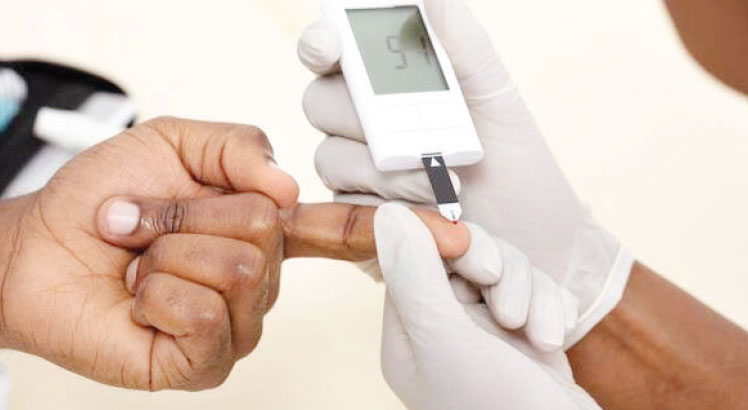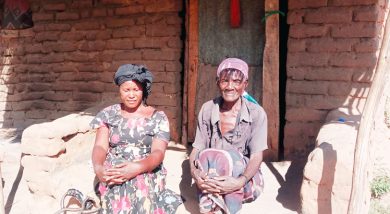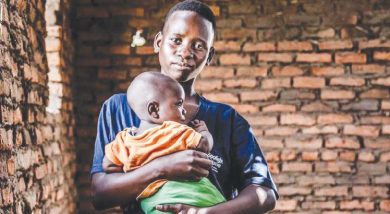Diabetes rising in children
R
achael Juma, 35, of Namitambo Village, Traditional Authority (T/A) Mpunga in Chirazulu District, almost lost her 12-year-old girl to diabetes.
She says she just noticed sudden changes in Isabel’s behaviour.
“She wasn’t happy like girls her age. She started losing weight and was mostly tired or sleepy. I thought she was only doing that to avoid household chores,” says the mother of four.
The woman was startled when her daughter started wetting the bed again after nine years.
She recalls that the girl started drinking excess water and frequently felt hungry.

“My husband and I thought she had been bewitched. My mother-in-law took her to a local witch doctor who told us that our relatives were bewitching her for riches,” Juma narrates.
After spending three weeks there, prolonged symptoms forced the parents to take Isabel to Namitambo Health Centre in the district hospital which lacked the necessary equipment to detect her condition.
That day, they took Isabel to Chiradzulu District Hospital where she was found with type 1 diabetes.
The Non-Communicable disease (NCD) increases a child’s risk of developing conditions such as narrowed blood vessels, high blood pressure, heart disease, stroke, hearing loss, gum disease and amputations if not treated.
“We had no idea that a child as young as she was could have such a disease. We grew up hearing that diabetes is the disease for the rich and old people in towns,” Juma recounts.
Doctors prescribed drugs to manage the disease.
Since then, they have gone to the hospital every month to replenish the dose.
“When we are told that there is no medicine, we are forced to buy from drugstores,” she explains.
The off-pocket payments force them to spend the little they need to buy food.
The tale is different for Daniel Sinoya, 41, of Chivuta Village, T/A Kalolo in Lilongwe. After noticing changes in his fourth daughter’s behaviour pattern, he took her to Msundwe Health Centre where she was put on diabetes treatment.
“We were shocked with the news,” he says. “She was only four years old when she started the insulin treatment,”.
The hospital trips and costly treatment stretch the seasonal farmers’ meagre income.
“The expensive treatment has worsened our financial constraints,” says the father of five..
NCDs make the poor poorer, contrary to the national universal health coverage policy to ensure everyone gets quality healthcare services without financial hardship.
Community health campaigner Maziko Matemba says the fight against non-infectious diseases is collective, but the government should allocate more funds to equip health facilities to detect and manage these silent killers.
“For early detection, laboratories for testing should be made available even in rural areas,” he says
Matemba commends the government for increasing healthcare spending in the K5.9 trillion 2024/25 National Budget for the 2024/25 fiscal year.
The K729.47 billion allocation for health represents 12.2 percent of the national budget.
This is the closest Malawi has got to achieving the 15 percent mark prescribed by the African Union’s Abuja Declaration.
“This shows that Malawi is going in the right direction to meet its national and global commitments,” said Matemba.
The rising NCD burden erodes the gains in the push to end poverty in low-income countries.
The silent killers force poor households to spend more on healthcare than daily needs.
Child Legacy coordinator for NCDs management Aisha Tawakaili non-communicable diseases are increasing in children.
“The 2015/16 fiscal year, Lilongwe Rural registered 57 patients aged below 18—34 boys and 23 girls.
Tawakali calls for intensified efforts to sensitise communities to the causes, signs, symptoms, dangers and prevention of NCDs.
“We need to bridge the knowledge gap in both rural and urban areas,” she says.
“Some people in rural areas still believe these are diseases for the rich and children cannot be diabetic. Others think the disease is contagious, not knowing it is genetic.”
Tawakali says early detection would help reduce the risk of death and exorbitant treatment costs many Malawians in rural areas cannot afford.
According to the World Health Organization (WHO), about five percent of people globally have type 1 diabetes, which is more common in children and young adults.
Diabetes is one of the chronic conditions that cannot be transmitted from one person to another but kill more than 36 million people yearly, according to WHO. Others are cancer and hypertension.
Nearly 80 percent of non-communicable deaths, about 29 million—occur in low and middle-income countries like Malawi.
Another study in Neno discovered that type 1 diabetes is rising in Malawi though the quality of care is frequently affected by gaps in diagnosis, treatment and management.
The findings further indicated that in the country, access to quality care remains low and the cost of insulin and other medical supplies is high. This is compounded by knowledge gaps and national guidelines for diabetes control.
One in eight young people with type 1 diabetes die without a diagnosis globally, WHO reports.
In 2021, Laura Drown and other researchers found 58 percent of district hospitals nationwide did not have insulin. The essential hormone averts children’s deaths since it helps turn food into energy and manage blood sugar levels.
Some children in sub-Saharan Africa cannot live longer than a year after diagnosis.






FjVCmELAKaUri